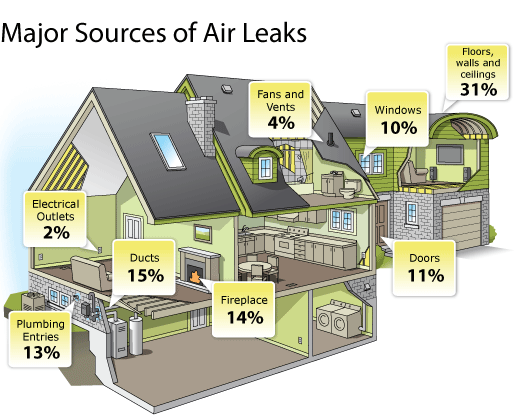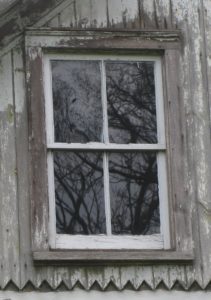“Help! My heating and cooling costs are too high!”
First, Don’t panic!
Try out these tips and you could be saving 20% or more on your bills each month. That’s $100s each year! Remember to start with the tips that have the postential to save you the most $$$. Also remember to compare the cost of each tip to what it could save you before beginning the project. Solar panels may save you $1,000s a year, but they likely cost $10,000s, for example! Choose the tips that have the most promise to reduce your costs at the lowest price.
If you would rather defer to an inexpensive option for evaluating and improving your home’s efficiency, you may want to consider www.2escore.com. For a fee ($60 – 100), a professional will tell you were your house has the most room for improvement to reduce your bills. There is also a Self-Audit version that will not be as thorough, but the cost is much lower.
Second, try out our 11 tips
…to save you money every. single. month! The list begins with low-cost options and progresses to more expensive and bigger projects. The items at the end of the list have the potential to have the most impact on your monthly bill.
-
Set heating / cooling units to a temperature closer to the outdoor air temperature.
NES recommends 68 in the winter and 78 in the summer.
-
Use the sun to work with you instead of against!

Use curtains to block the sun in the summer, and make sure south-facing windows remain unblocked in the winter months.
-
Use windows to work with the ebb and flow of the daily temperatures
In the spring and fall, warm days have cool nights. Open the windows before bed with or without a fan to pull air, and close them first thing in the morning. Your HVAC won’t have to run until late morning! Try the reverse on those warmer days coming out of winter: Open the windows as soon as the temperature is above the temperature of the house.
-
Use home conveniences efficiently.
– Turn off lights and electronics when you leave the room. A light bulb left on for a month straight is $4.75 in electricity. Consider more efficient light bulbs, such as LEDs or CFLs. NES offers a light bulb savings calculator.
– Consider the proper use of a space heater in the winter. If you spend the majority of your time in one or two rooms of your house, set the thermostat extra low and use the space heater in your primary room. -
Appliances
– Always try to purchase Energy Star certified appliances
– Always run a full dishwasher load, and consider letting it air dry instead of heat dry. You can even wash bigger dishes by hand to take up less space in the washer!
– Set water heater temperature lower. If it is stored in a cool room, consider wrapping it in more insulation. -
Seal drafts and holes.

– Most older homes have drafty tendencies. Get out your Detective hat and get to work. Use Great Stuff for big gaps where water and appearance is not a concern, and use caulk for smaller gaps. Baseboards, holes around plumbing, and cables are all easy culprits.
– Hold the back of your hand to doors (if winter). Feel a cool draft? Invest in some weather stripping for a tight seal. Sealling window and door drafts alone can reduce your bill by more than 10%! -
Keep HVAC air filter clean by replacing regularly
-
Have your HVAC system professionally evaluated for proper airflow
Don’t assume your system is balanced! Many HVAC installation companies do not go to the trouble to make sure the air going to and from each room is properly balanced. Sure, it’s cooling and heating the house, but is a small bedroom vent forcing air into a room with no path back to a return vent? Etc.
It’s not easy to tell if this check-up is necessary for your house. Before you call, think logically. Does the air coming out of each vent have an easy patch back to the HVAC system’s big return vent (or small return vent elsewhere)? Do rooms appear to have a proper number of vents? If a bedroom has more than one vent, something is likely off.We recommend Brian Sain as a professional company to take care of you. Visit briansainheatingandair.com or call (615) 504-5502.
-
Insulate attic.
You can spend $200 – $300 for insulation and machine rental to do this job yourself. It might pay for itself in the first 3 – 5 winters!
-
Purchase a newer, efficient heating and cooling system.
This one can have an intimidating cost, but if your unit is close to or older than 15 years, it’s probably about time. Add up your energy bills for last winter, then multiply that sum by .2 (20%). Divide the result into the cost of buying and installing the new system, about $4,500 or so, and you’ll see how many years it will take to recoup your investment.” You can contact us for a couple recommended contractors to choose from.
-
Replace old windows and doors.
 Window replacements to current double-hung vinyl windows should only cost $300/window, an exterior door closer to $500. If you have anything but vinyl windows are installed in your home, you likely have quite a bit of room for energy savings. The payback time for your investment may be closer to a decade, but you’ll also have increased the value of your home while having a feature more enjoyable to live in. We can also recommend a contractor for this job if you want to contact us.
Window replacements to current double-hung vinyl windows should only cost $300/window, an exterior door closer to $500. If you have anything but vinyl windows are installed in your home, you likely have quite a bit of room for energy savings. The payback time for your investment may be closer to a decade, but you’ll also have increased the value of your home while having a feature more enjoyable to live in. We can also recommend a contractor for this job if you want to contact us.
Hopefully you found some good ideas to get started! Many of these tips began with This Old House and Nashville Electric Service. You can always stay up-to-date with our #1 resource for Nashville-area homeowners by dropping your email in the form below.
Which tips helped you the most? Which ones will you try first? What questions do you have? Comment below!
